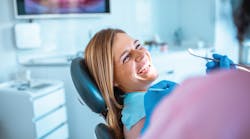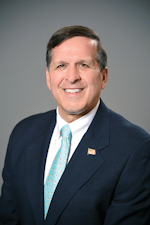There are four reasons that this is such an easy pathway:
1. Periodontal disease is an epidemic, even among patients who regularly visit dental practices.
2. Many practices do not probe patient pocket depths even once a year.
3. The diagnosis of periodontal disease is easy.
4. Everything can be done by the hygienist.
Here we have a widespread disease that can be treated by dental practices following a quick and easy diagnosis. In other words, all the practice must do is probe pocket depths on an annual basis, identify patients with periodontal disease, and become skilled and scripted at case presentation.
We have observed many practices that have increased revenue by six figures in under 12 months simply by implementing a full periodontal diagnostic and treatment program. They’re providing excellent care for patients and referrals to a periodontist as necessary.
Initial therapy (more commonly referred to as soft-tissue management) means big benefits and big increases in four areas:
Fees. There is a different insurance code and higher fee for quadrant scaling and root planing in initial therapy. Many patients need all four quadrants treated.
Case acceptance. When patients begin to understand the relationship between periodontal health and systemic health, they become far more interested in treatment. This increases case acceptance.
Revenue. Initial therapy is provided by the dental hygienist, increasing practice revenue through a higher average production per patient. Meanwhile, the dentist is still able to maintain a full schedule. At Levin Group, we call this “delegated production.”
Patient satisfaction. Patients are impressed with practices that can diagnose any potential problems and help them attain optimal oral health.
We recommend that you take the time to implement a periodontal diagnostic and treatment program and train everyone on the team in this regard. Although the hygienist will handle almost the entire program, patients will have questions to ask at the front desk regarding administrative details such as insurance submission, coverage, length of appointments, etc. Once this program has been put into place, the practice will begin to identify numerous current and new patients who can benefit from this service. Additionally, many patients will require more than the standard two visits per year, thus increasing hygiene production revenue even further.
Editor's note: This article appeared in the August 2021 print edition of Dental Economics magazine.








